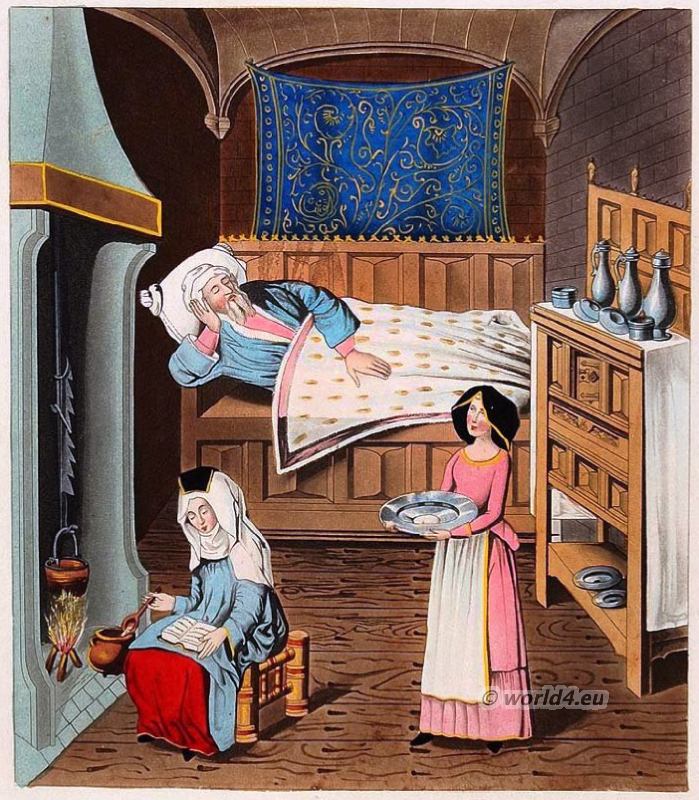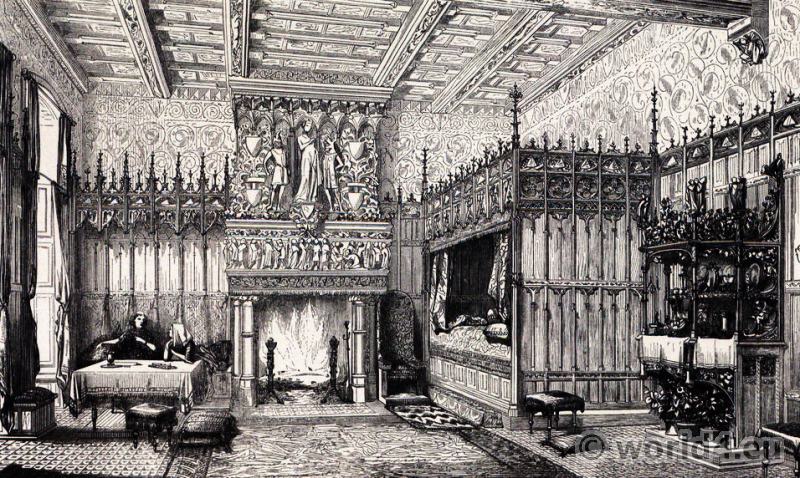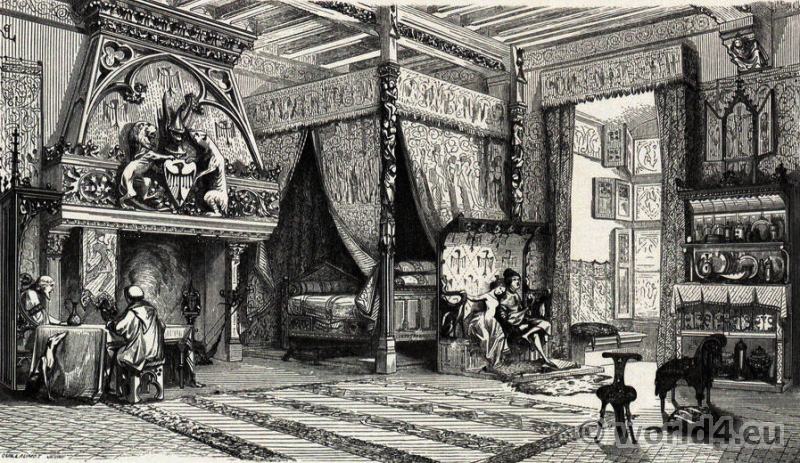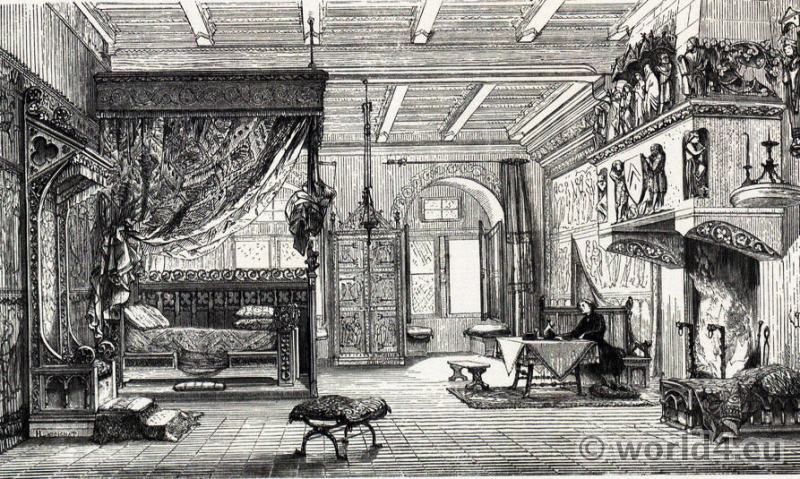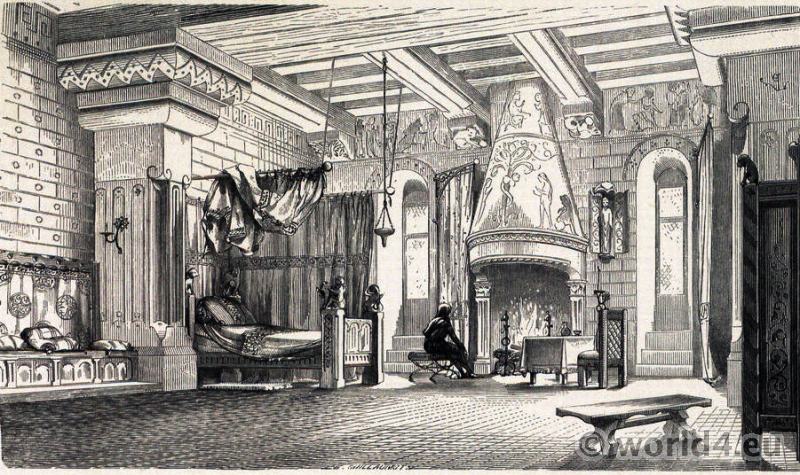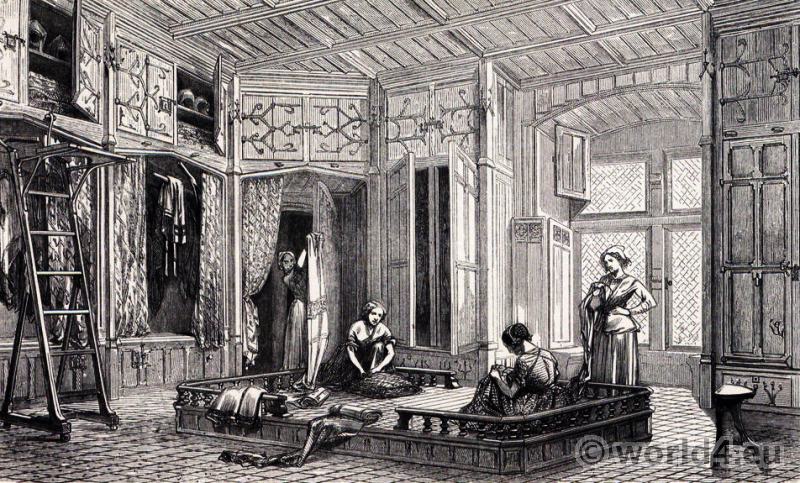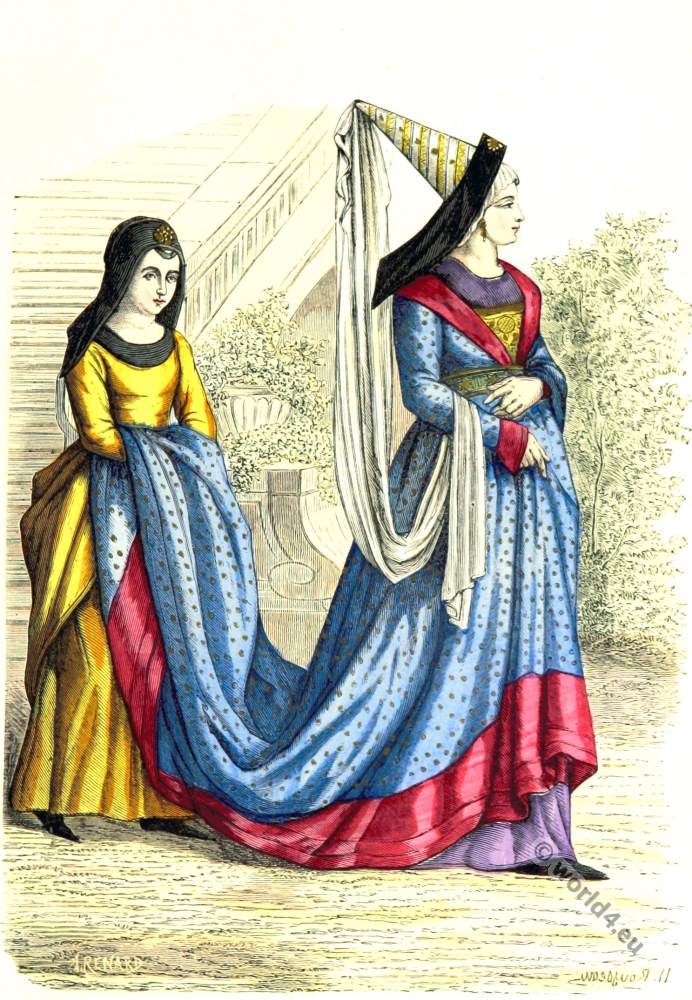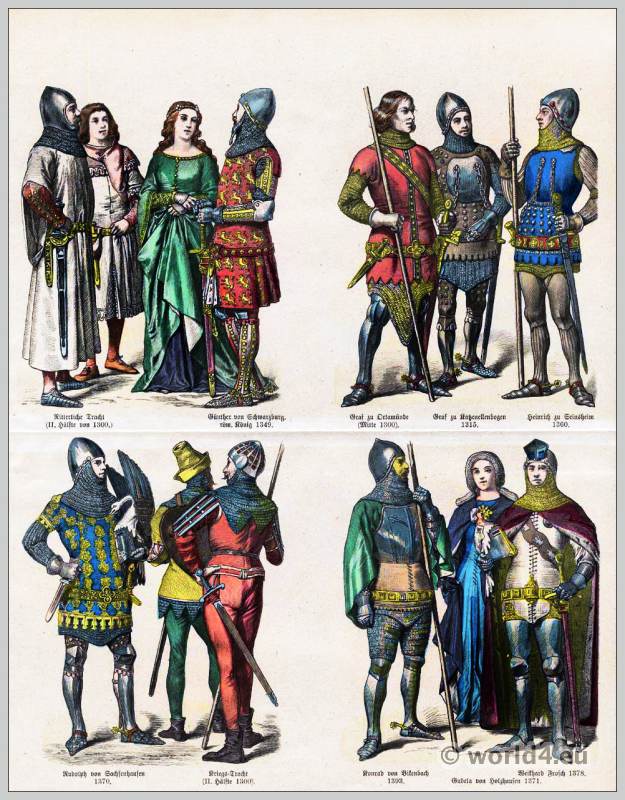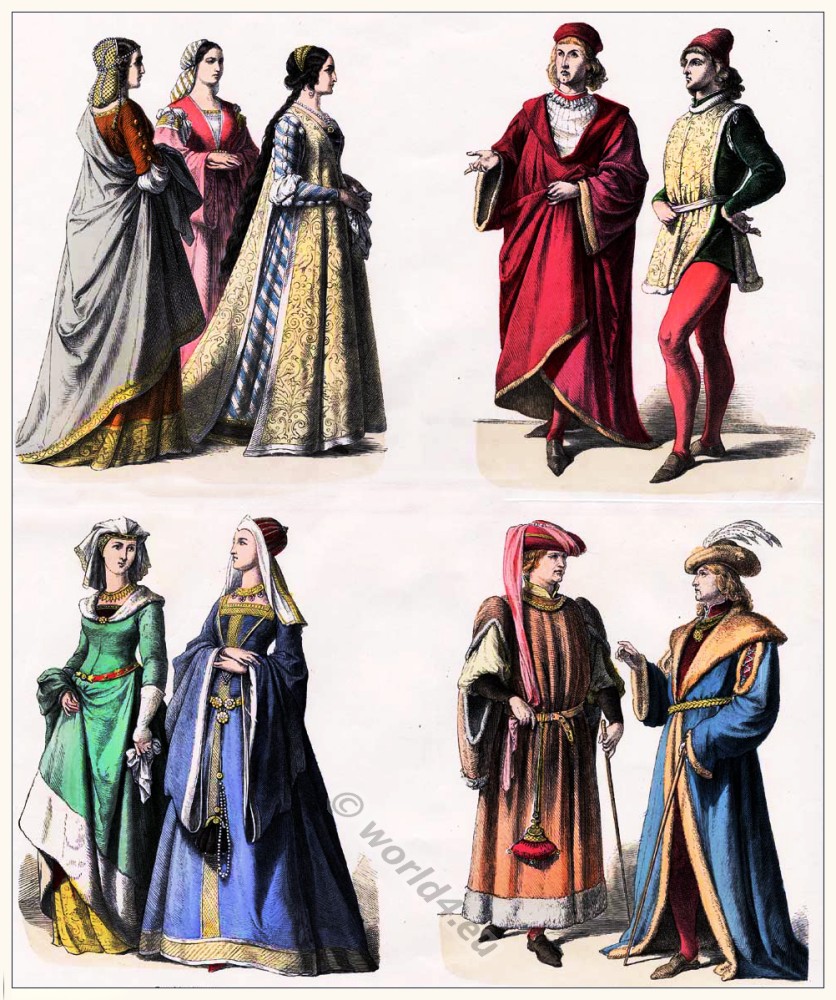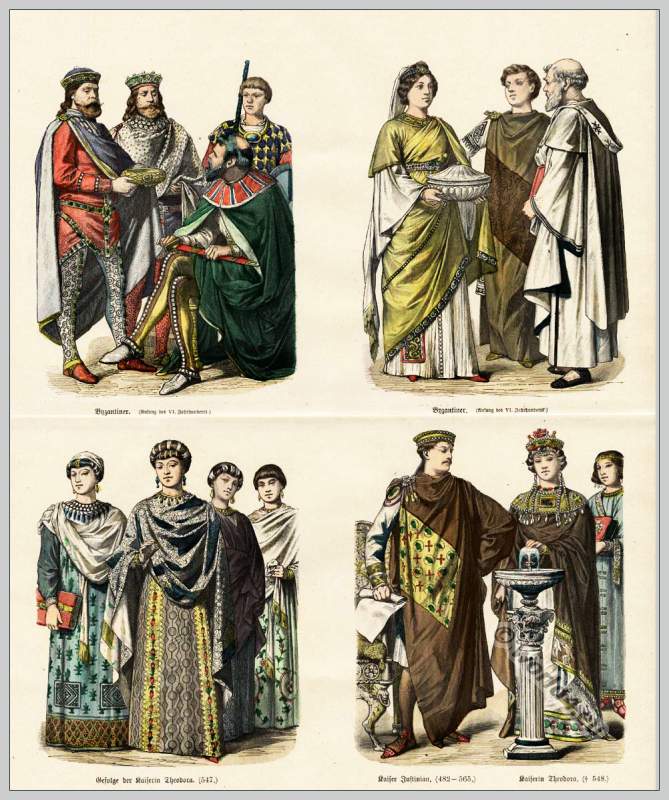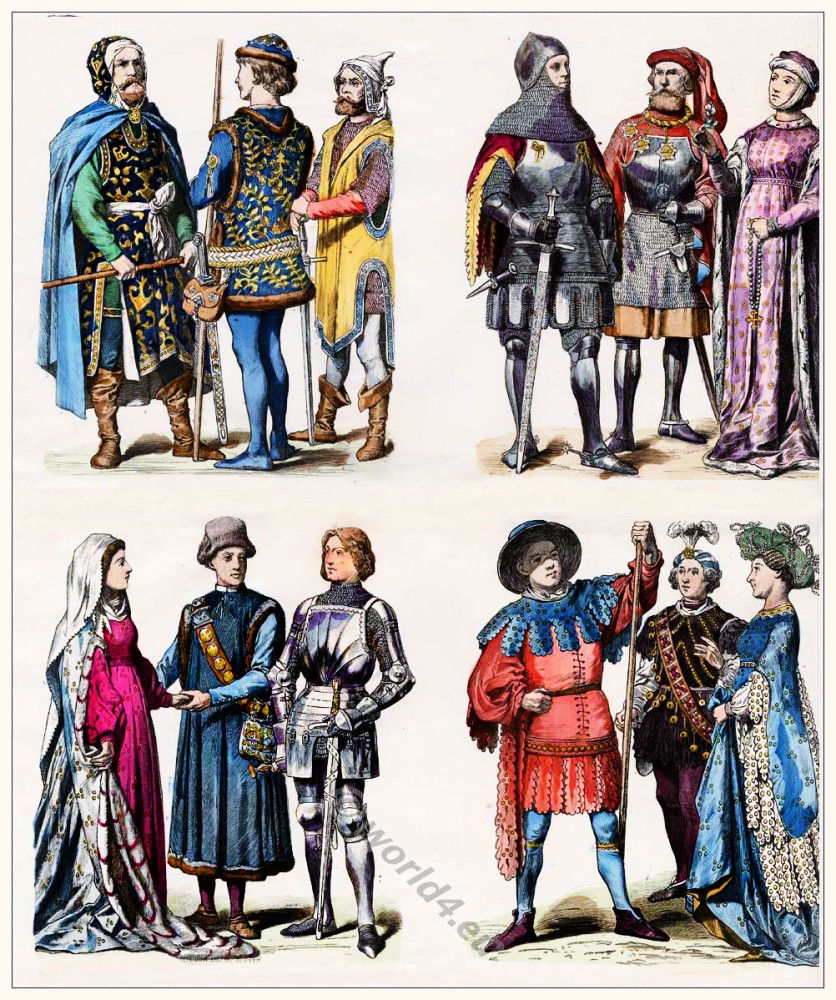Medieval room interior, 15th century.
Historia Scholastica. The history of Tobit.
FINE manuscript of the French translation, by Guiart de Moulins, of the Historia Scholastica of Peter Comestor, has furnished the subject of the accompanying plate. It was intended to represent a scene in the history of Tobit, who is reclining on the couch, blind and sick, and, has just despatched his son Tobias to the city of Rages. In the MS. there is another compartment which represents young Tobias going out of his father’s house, to his guide, the angel Raphael, who is properly booted for the journey, but is distinguished from his companion by his wings. The lady, who is cooking, was no doubt intended to represent Tobit’s wife Anna. The picture above itself is a good representation of the interior of a room in the fifteenth century.

Castle room in the XV century. Chambre de château au XV siècle. 
Castle room in the XIV century. Chambre de château au XIV siècle. 
Castle room in the XIII century. Chambre de château au XIII siècle. 
Castle room in the XII century. Chambre de château au XII siècle.
The hanging behind the couch seems to serve the purpose of a window-curtain. The species of jack on which the cooking utensil is suspended is frequently met with in the illuminations of old manuscripts. The buffet, with its cups and pitchers, is not a part of the original design; but has been introduced from another illumination in the same volume, representing the feast of Balthazar when he beheld the portentous writing on the wall.
The manuscripts of the work to which this picture forms an illumination are very numerous, and generally embellished with pictures. This manuscript, which is preserved in the Royal Library in the British Museum (15 D. I), is a very large volume in folio, containing only a part of the book, the other volume not being there, and was written in the year 1470 (in the reign of Edward IV. of England). At the end is subscribed, in the hand which executed the whole of the volume, “escript par moy, Du Ries.”
Peter Comestor, as he is styled in Latin, his real name having been either Mangeur or Mangeard, was a native of Troyes in Champagne, and was long, as chancellor of the University of Paris, famous for his learning and eloquence. He died in 1179, in the abbey of St. Victor, where he was buried. His epitaph in Latin verse, which was visible on his tomb before the destruction of religious monuments which accompanied the great revolution is a singular specimen of the ‘taste of the age in which it was composed:
” Petrus eram quem pcero tegit; dictusque Comestor
Nunc comedor. Vivus docui, nec cesso docere
Mortuus, ut dicat qui me vidat incinerratum,
Quod sumus iste fuit, erimus quandoque quod iste.”
Peter Comestor compiled a paraphrase of the Bible history, which in after ages became more popular, and was more generally read, than the bible it-self.
This work was translated into French somewhat more than a century after it was originally composed, by Guiart des Moulins, who informs us in his preface that he was born in 1251; that he began the translation in 1291, the year in which he was made a canon of St. Peter’s at Aire; that be finished the book in January, 1294; and that in 1297, perhaps partly as a reward for his literary labours, he was made dean of the same church. The popularity of Guiart des Moulins’ work was very great: and manuscripts of it are found in most collections. It was revived in the fifteenth century by Jean de Rely, by order of Charles VIII., and printed in folio about 1496, at Paris, by Antoine Verard.
The figures on the present page, representing a mirror and a clock, are taken from a MS. of the Romance of Renaud of Montauben, painted in the fifteenth century by John of Bruges, and now preserved in the Library of the Arsenal at Paris (No. 244).
Source: Dresses and Decorations of the Middle Ages from the 7th to the 17th centuries by Henry Shaw F.S.A. Published: London William Pickering 1843.
Related
Discover more from World4 Costume Culture History
Subscribe to get the latest posts sent to your email.

